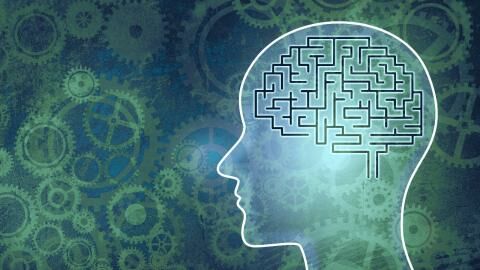Are you used to solving optical illusions and other visual puzzles while browsing the web? If this is the case, then here's another one: stare at the image for a few seconds. After staring at the picture for a few seconds do you suddenly feel as if the central black hole expands?
Discover our latest podcast
If that’s the case then it is a completely normal reaction to that picture. In fact, according to a new study published May 30, 2022, in the journal Frontiers in Human Neuroscience, this ‘expanding hole’ optical illusion leaves the same impression on 86% of people.
An optical illusion that could help science
As Dr Bruno Laeng, a professor in the Department of Psychology at the University of Oslo and the lead author of the study, explained in a statement:
The 'expanding hole' is a highly dynamic illusion: the circular smear or shadow gradient of the central black hole evokes a marked impression of optical flow as if the observer were heading towards a hole or a tunnel.
from ScienceNorway 🧠: https://t.co/uJs4vz8HAL
— Laeng (@BrunoLaeng) June 30, 2022
However, far from being simple, this illusion presents a real scientific interest. It could be used to better understand the complex processes that our visual system uses to anticipate and make sense of the visual world. Moreover, this optical illusion is so effective that it causes our pupils to dilate as if we're actually standing in a dark room.
A minority of people are unaffected, but why?
The test was conducted with a panel of volunteers, who were presented with variations of the image in various colours. The researchers concluded that the illusion appeared more effective when the hole was black.
In addition, these black holes favoured stronger reflex dilations of the pupils of the participants when the phenomenon was well perceived. Dr Laeng said:
Here we show, based on the new illusion of the 'expanding hole', that the pupil reacts to the way we perceive light - even if this 'light' is imaginary as in the illusion - and not only to the amount of light energy that actually enters the eye
Interestingly, a minority of people were insensitive to the illusion of the expanding hole. Dr Laenf said:
Our results show that the pupil dilation or contraction reflex is not a closed-loop mechanism, like a photocell opening a door, impervious to any information other than the actual amount of light stimulating the photoreceptor.
Rather, the eye adapts to perceived and even imagined light, not just physical energy. Future studies may reveal other types of physiological or bodily changes that can 'illuminate' how illusions work.
This article is translated from Gentside FR.
Read more:
⋙ Optical Illusion: There is something wrong with this picture, can you find it within 10 seconds?
⋙ This optical illusion is so hard, that only 1% of people can find the third animal
⋙ Optical illusion: What you see first reveals your priorities in your life















